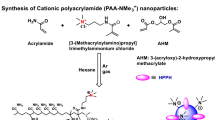Summary
Although 5-aminolevulinic acid (5-ALA)-mediated photodynamic therapy (PDT) has been demonstrated to be a novel and effective therapeutic modality for some human malignancies, its effect and mechanism on glioma are still controversial. Previous studies have reported that 5-ALA-PDT induced necrosis of C6 rat glioma cells in vitro. The aim of this study was to further investigate the effect and mechanism of 5-ALA-PDT on C6 gliomas implanted in rats in vivo. Twenty-four rats bearing similar size of subcutaneously implanted C6 rat glioma were randomly divided into 3 groups: receiving 5-ALA-PDT (group A), laser irradiation (group B), and mock procedures but without any treatment (group C), respectively. The growth, histology, microvessel density (MVD), and apoptosis of the grafts in each group were determined after the treatments. As compared with groups B and C, the volume of tumor grafts was significantly reduced (P<0.05), MVD was significantly decreased (P<0.001), and the cellular necrosis was obviously increased in group A. There was no significant difference in apoptosis among the three groups. The in vivo studies confirmed that 5-ALA-PDT may be an effective treatment for gliomas by inhibiting the tumor growth. The mechanism underlying may involve increasing the cellular necrosis but not inducing the cellular apoptosis, which may result from the destruction of the tumor microvessels.
Similar content being viewed by others
References
Ed WZ. Neurosurgery: Intracranial tumor. Wuhan: Hubei Science and Technology Press, 2004,397–400
Sathornsumetee S, Rich JN. New treatment strategies for malignant gliomas. Expert Rev Anticancer Ther, 2006,6(7):1087–1104
Aoki T, Hashimoto N, Matsutani M. Management of glioblastoma. Expert Opinion Pharmacother, 2007,8(18): 3133–3146
Tomankova K, Kolarova H, Kolar P, et al. Study of cytotoxic effect of photodynamically and sonodynamically activated sensitizers in vitro. Toxicol In Vitro, 2009,23(8):1465–1471
Leman JA, Morton CA. Photodynamic therapy: applications in dermatology. Expert Opin Biol Ther, 2002,2(1):45–53
Barr H, Kendall C, Stone N. Photodynamic therapy for esophageal cancer: a useful and realistic option. Technol Cancer Res Treat, 2003,2(1):65–76
McGillis ST, Fein H. Topical treatment strategies for non-melanoma skin cancer and precursor lesions. Semin Cutan Med Surg, 2004,23(3):174–183
Svatek RS, Kamat AM, Dinney CP. Novel therapeutics for patients with non-muscle-invasive bladder cancer. Expert Rev Anticancer Ther, 2009,9(6):807–813
Pogue BW, Gibbs-Strauss S, Valdes PA, et al. Review of neurosurgical fluorescence imaging methodologies. IEEE J Sel Top Quantum Electron, 2010,16(3):493–505
Redmond RW, Gamlin JN. A compilation of singlet oxygen yields from biologically relevant molecules. Photochem Photobiol, 1999,70(4):391–475
Fotinos N, Campo MA, Popowycz F, et al. 5-Aminolevulinic acid derivatives in photomedicine: Characteristics, application and perspectives. Photochem Photobiol, 2006,82(4):994–1015
Leggett CL, Gorospe EC, Murad MH, et al. Photodynamic therapy for unresectable cholangiocarcinoma: a comparative effectiveness systematic review and meta-analyses. Photodiagnosis Photodyn Ther, 2012,9(3):189–195
Peng Q, Nesland JM. Effects of photodynamic therapy on tumor stroma. Ultrastruct Pathol, 2004,28(5–6):333–340
Eljamel MS, Goodman C, Moseley H. ALA and Photofrin fluorescence-guided resection and repetitive PDT in glioblastoma multiforme: a single centre phase III randomised controlled trial. Lasers Med Sci, 2008,23(4):361–367
Stepp H, Beck T, Pongratz T, et al. ALA and malignant glioma: fluorescence-guided resection and photodynamic treatment. J Environ Pathol Toxicol Oncol, 2007,26(2):157–164
Cao Y, Zhang MZ, Zhao JZ, et al. Photodynamic diagnosis and fluorescence-guided resection of malignant gliomas: a report of 15 cases. Zhonghua Wai Ke Za Zhi (Chinese), 2005,43(5):334–338
Zimmermann A, Ritsch-Marte M, Kostron H. mTHPC-mediated photodynamic diagnosis of malignant brain tumors. Photochem Photobiol, 2001,74(4):611–616
Huang Z. A review of progress in clinical photodynamic therapy. Technol Cancer Res Treat, 2005,4(3):283–293
Yoo JO HK. New insights into the mechanisms for photodynamic therapy-induced cancer cell death. Int Rev Cell Mol Biol, 2012,295:139–174
Karmakar S, Banik NL, Patel SJ, et al. 5-Aminolevulinic acid-based photodynamic therapy suppressed survival factors and activated proteases for apoptosis in human glioblastoma U87MG cells. Neurosci Lett, 2007,415(3):242–247
Kamoshima Y, Terasaka S, Iwasaki Y. Photodynamic therapy mediated with 5-aminolevulinic acid for C6 glioma spheroids. Hokkaido Igaku Zasshi, 2008,83(3):167–173
Kamoshima Y, Terasaka S, Kuroda S, et al. Morphological and histological changes of glioma cells immediately after 5-aminolevulinic acid mediated photodynamic therapy. Neurol Res, 2011,33(7):739–746
Weidner N. Intratumor microvessel density as a prognostic factor in cancer. Am J Pathol, 1995,147(1):9–19
Hu SS, Cheng HB, Zheng YR, et al. Effects of photodynamic therapy on the ultrastructure of glioma cells. Biomed Environ Sci, 2007,20(4):269–273
Stummer W, Tonn JC, Mehdorn HM, et al. Counterbalancing risks and gains from extended resections in malignant glioma surgery: a supplemental analysis from the randomized 5-aminolevulinic acid glioma resection study. J Neurosurg, 2011,114(3):613–623
Hirschberg H, Sun CH, Krasieva T, et al. Effects of ALA-mediated photodynamic therapy on the invasiveness of human glioma cells. Lasers Surg Med, 2006,38(10):939–945
Hirschberg H, Spetalen S, Carper S, et al. Minimally invasive photodynamic therapy (PDT) for ablation of experimental rat glioma. Minim Invasive Neurosurg, 2006,49(3):135–142
Wu SM, Ren QG, Zhou MO, et al. Protoporphyrin IX production and its photodynamic effects on glioma cells, neuroblastoma cells and normal cerebellar granule cells in vitro with 5-aminolevulinic acid and its hexylester. Cancer Lett 2003,200(2):123–131
Otake M, Nishiwaki M, Kobayashi Y, et al. Selective accumulation of ALA-induced PpIX and photodynamic effect in chemically induced hepatocellular carcinoma. Br J Cancer 2003,89(4):730–736
Vrouenraets MB, Visser GW, Snow GB, et al. Basic principles, applications in oncology and improved selectivity of photodynamic therapy. Anticancer Res, 2003,23(1B):505–522
Silva JN, Filipe P, Morliere P, et al. Photodynamic therapies: principles and present medical applications. Biomed Mater Eng, 2006,16(4 Suppl):S147–S154
Author information
Authors and Affiliations
Corresponding author
Additional information
Both authors contributed equally to this work.
This work was supported by the grants from the National Natural Science Foundation of China (No. 30973073, 81172402 and 81372683).
Rights and permissions
About this article
Cite this article
Yi, W., Xu, Ht., Tian, Df. et al. Photodynamic therapy mediated by 5-aminolevulinic acid suppresses gliomas growth by decreasing the microvessels. J. Huazhong Univ. Sci. Technol. [Med. Sci.] 35, 259–264 (2015). https://doi.org/10.1007/s11596-015-1421-6
Received:
Revised:
Published:
Issue Date:
DOI: https://doi.org/10.1007/s11596-015-1421-6




